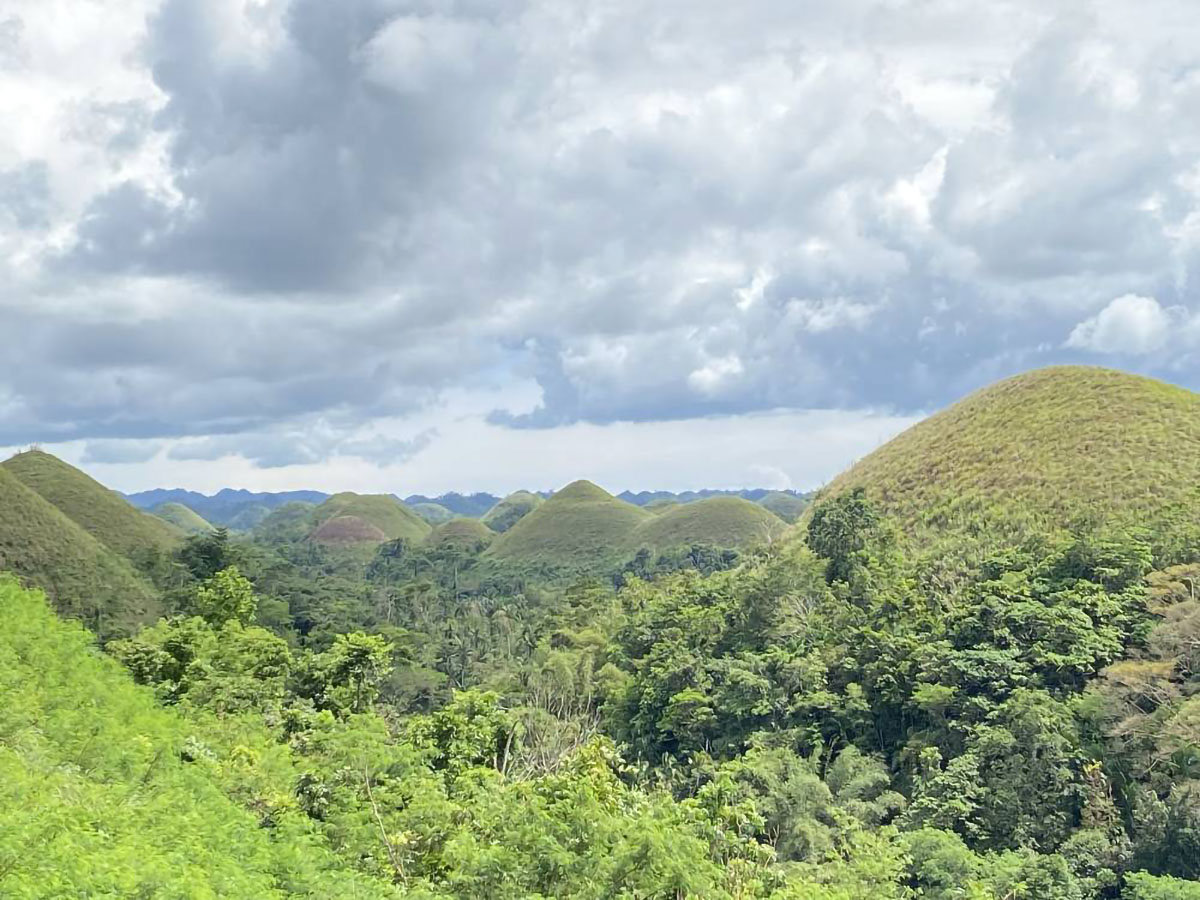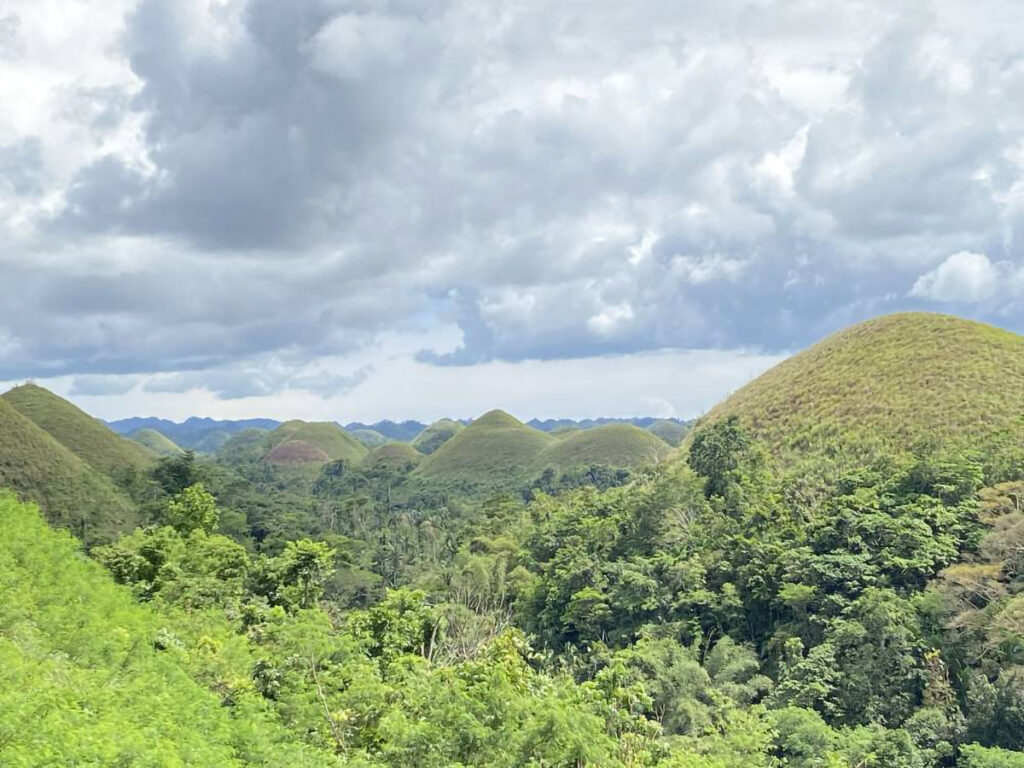
PROTECTION A bill filed by Bohol and Palawan lawmakers in the House of Representatives hopes to ensure the protection and preservation of the Chocolate Hills, seen in this photo taken in Carmen, Bohol. —LEO UDTOHAN
TAGBILARAN CITY—Four lawmakers have filed a bill establishing the boundaries of the Chocolate Hills Natural Monument (CHNM) following the controversy sparked by the discovery of illegally built structures in the protected natural attractions in Bohol province.
Bohol Representatives Edgar Chatto (first district), Vanessa Cadorna Aumentado (second district) and Alexie Besas Tutor (third district) as well as Palawan Rep. Jose Alvarez said House Bill No. 10438, which they filed on May 20, would allow owners of residential structures within 20-meter area from the hills to stay, improve and repair their facilities, provided that “no expansion will be conducted and the owner is listed as tenured migrant.”
The owners of the titled lots can harvest fruits and other agricultural crops as well as engage in small-scale livelihood projects.
READ: Chocolate hills resort: Bohol governor tells DENR to take legal action ASAP
“Together, we will shape the law that will not only ensure the protection and preservation of the Chocolate Hills but also protect the rights of our people to sustainable development,” said Chatto of HB 10438.
The bill will also amend the composition of the CHNM Protected Area Management Board in relation to the Expanded National Integrated Protected Areas System.
READ: Grassfire hits Chocolate Hills in Bohol
Membership in the CHNM Protected Area Management Board will include the Department of Tourism; the National Museum of the Philippines; the United Nations Educational, Scientific and Cultural Organization (Unesco) technical committee of Bohol; and representatives of religious groups and environmental planners and architects operating within the area or within the province of Bohol.
Consultation
Aumentado said a consultation process would be conducted to hear the sentiments of local officials, residents, civil society and other groups.
READ: DENR chief: Illegal structures in Chocolate Hills must be removed
“Consultative process is one of the best ways to achieve our main goal: a better law that aims to protect the lives of the people without compromising our environment. We’re really just looking forward to this because this is for our province, for our beloved lalawigan Bohol,” she said.
Tutor said they were hopeful that the bill would prosper.
READ: DOT seeks inclusion in protected areas board amid Chocolate Hills issue
“To the sectors who feel that your voice needs to be heard on this matter, please prepare [and be] ready. You may submit your position paper,” she said.
The congressional offices located at the ground floor of the new provincial capitol in this capital city are ready to accept position papers from interested groups.
Bohol Island, including the Chocolate Hills, is recognized as the first global geopark of Unesco in the Philippines and among the 213 in 48 countries.
Natural monument
According to Unesco, global geoparks are “single, unified geographical areas where sites and landscapes of international geological significance are managed with a holistic concept of protection, education and sustainable development.”
“A Unesco Global Geopark uses its geological heritage, in connection with all other aspects of the area’s natural and cultural heritage, to enhance awareness and understanding of key issues facing society, such as using our earth’s resources sustainably, mitigating the effects of climate change and reducing natural hazard-related risks,” it said.
The Chocolate Hills, the main tourism attraction of Bohol, are composed of 1,776 limestone mounds surrounding the island’s interior plains. The biggest concentrations of these hills are found in the towns of Carmen, Batuan and Sagbayan.
In 1997, then President Fidel V. Ramos, through Presidential Decree No. 1037, declared the Chocolate Hills as a Natural Monument, ensuring their protection.
These are protected under the Expanded National Integrated Areas Protected System Act.
Last March, authorities investigated the Captain’s Peak Garden and Resort in Sagbayan town for structures constructed within the Chocolate Hills and for operating without an environmental compliance certificate from the Department of Environment and Natural Resources.
Another resort, Bud Agta, in Carmen town, was also cited for the alleged construction of illegal structures within the protected area.
